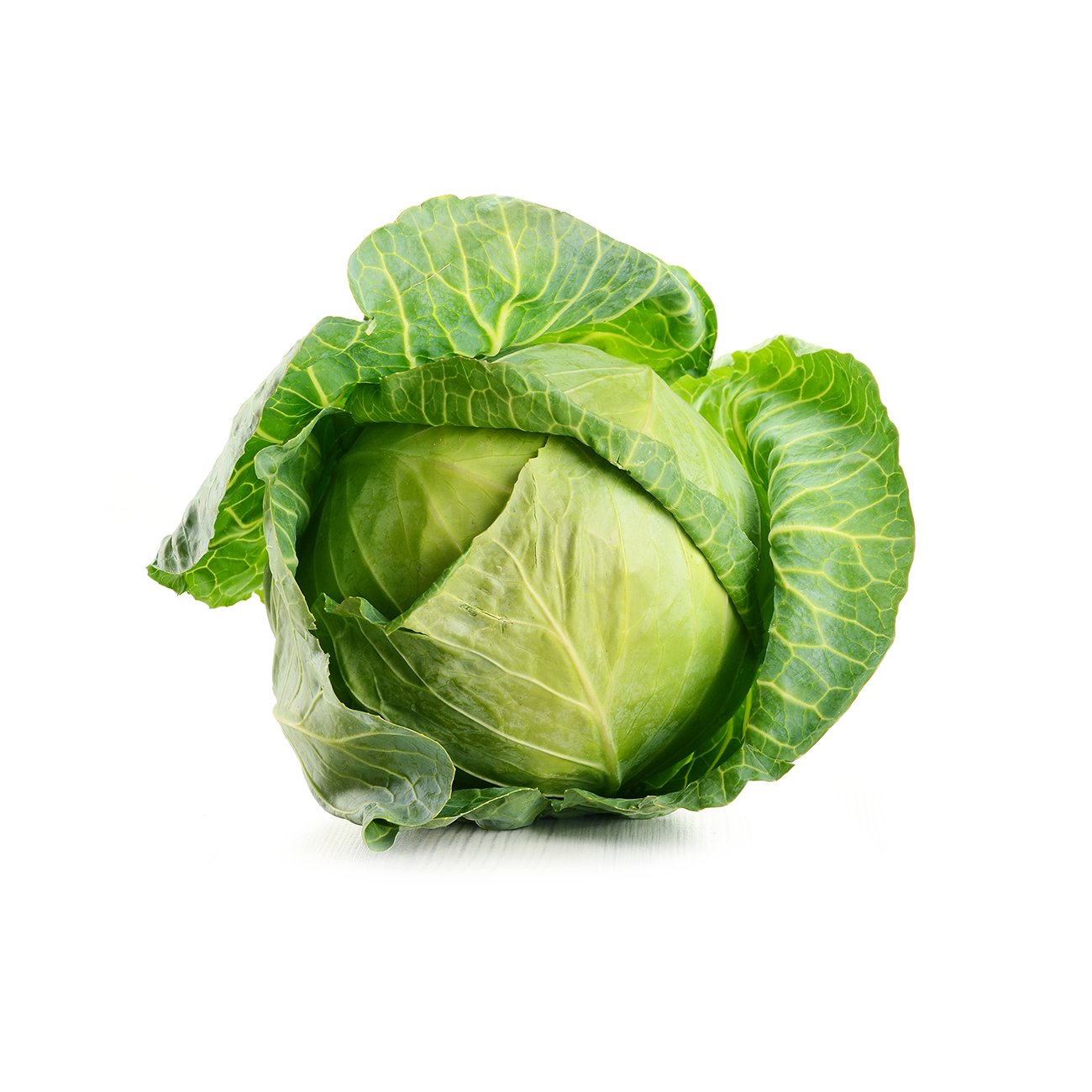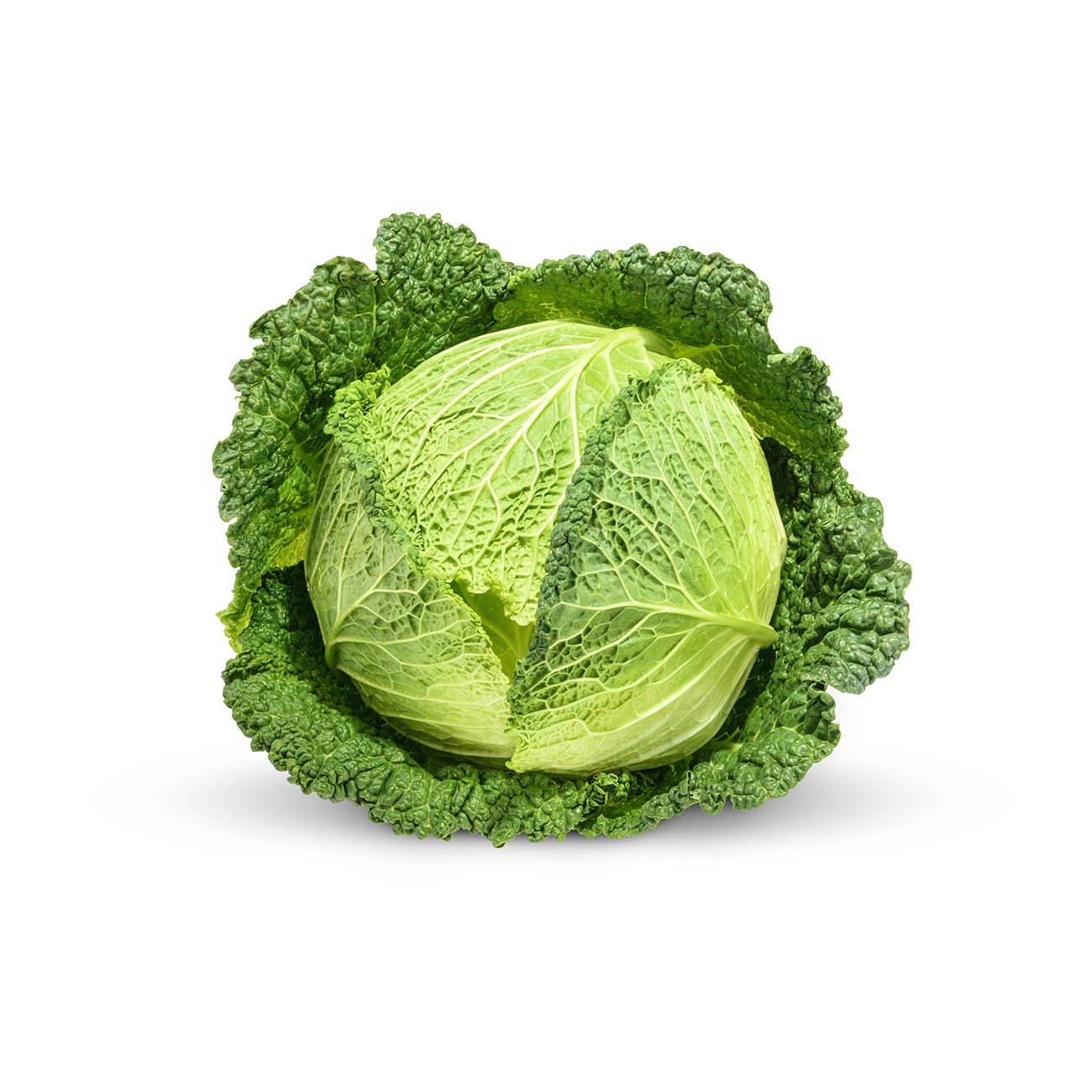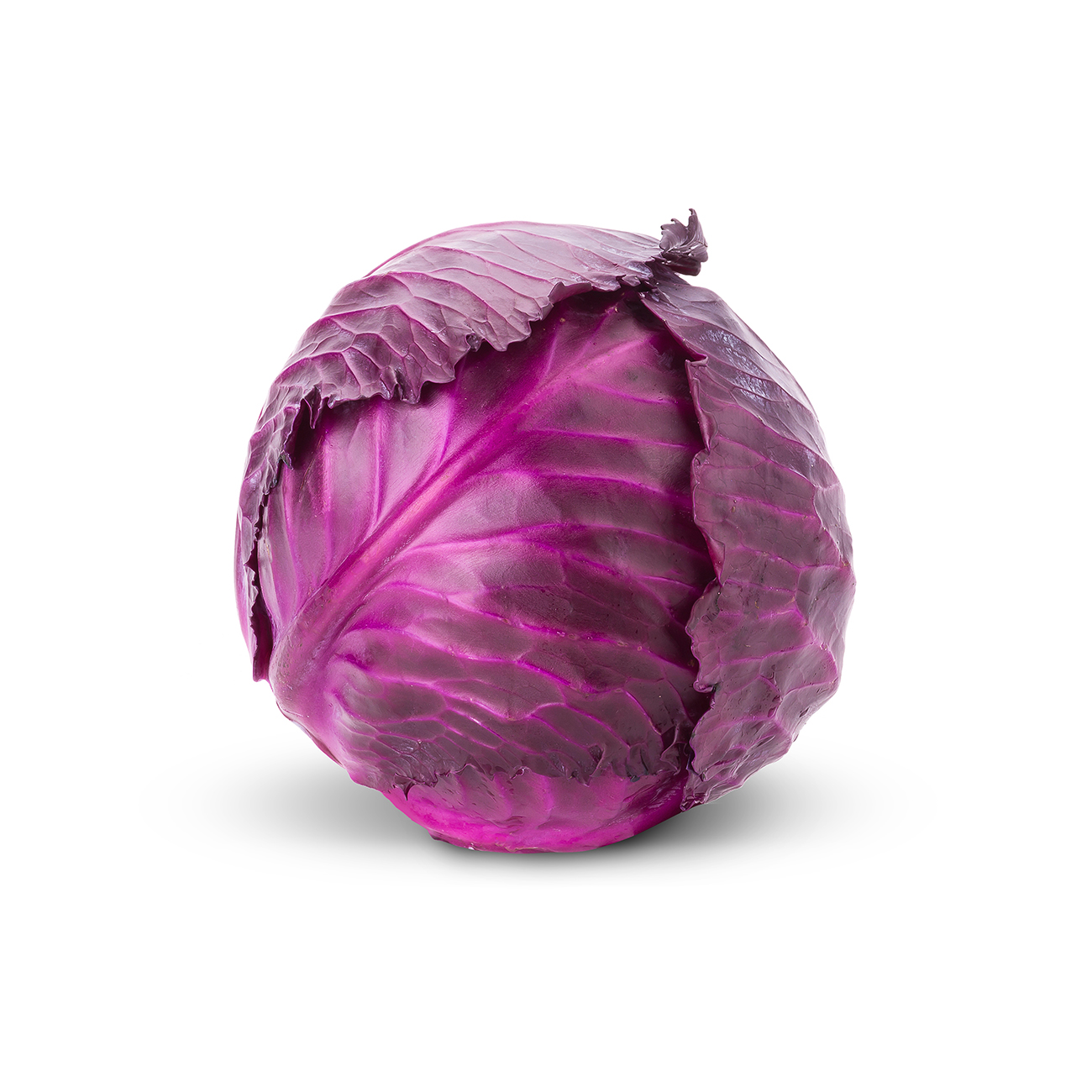Cabbage, white or green
A smooth, round ball of leaves that turn sweeter with cooking.
Alternative Name
Dutch cabbage
Scientific Name
Brassica oleracea (capitata group)
Health benefits
Bones & joints Brain & nervous system Digestion Heart Hydration
Round in shape, with tightly packed layers of leaves, white cabbage is the most common of the cabbages. They can vary in colour from very white to mid green, although the inner leaves are usually pale. This vegetable is a member of the brassica—or cabbage—family, also known as a cruciferous vegetable.
-
Harvesting
Maturity is based on head compactness. A compact head can be only slightly compressed with moderate hand pressure. A very loose head is immature, and a very firm or hard head is mature. After trimming outer wrapper leaves, cabbage heads should be a colour typical of the cultivar (green, red, or pale yellow-green), firm, heavy for the size and free of insect, decay, seed stalk development and other defects. Leaves should be crisp and turgid.Postharvest storage temperature
Storage at 0°C optimises storage life. Early crop round cabbage can be stored 3–6 weeks, while late crop cultivars can be stored for up to 6 months. For the latter, storage at -0.5°C is sometimes recommended. Deterioration during storage is associated with stem or seed stalk growth, root growth, internal breakdown, leaf abscission, discolouration, decay and black speck. Freeze damage can occur if round cabbages are stored below -0.9°C. It appears as darkened translucent or water-soaked areas that will deteriorate rapidly after thawing.Controlled atmosphere storage
Long shelf life can be obtained with low O2 (2.5–5%) and high CO2 (2.5–6%) atmospheres at temperatures of 0–5°C. CA storage will maintain colour and flavour of cabbage, retard root and stem growth, and reduce leaf abscission. O2 atmospheres below 2.5% cause fermentation and CO2 atmospheres >10% cause internal discolouration.Ethylene sensitivity
Cabbages are sensitive to ethylene, which causes leaf abscission and yellowing. Adequate ventilation during storage is important to maintain low ethylene levels. It does not increase the disorder 'black speck' or 'pepper spot'.Humidity storage
Store at >95% relative humidityDisease & infection
The most common decays are watery soft rot, grey mould rot, alternaria leaf spot and bacterial soft rot. These result in a slimy breakdown of the infected tissue and may follow fungal infections. Trimming outer leaves, rapid cooling and low temperature storage reduce development of these rots. -
Keep in vegetable drawer of fridge.

You might also like
Veggy tip
Eat white or green cabbage raw in coleslaws, or steam or stir-fry for a maximum of 3 minutes to preserve health benefits.


